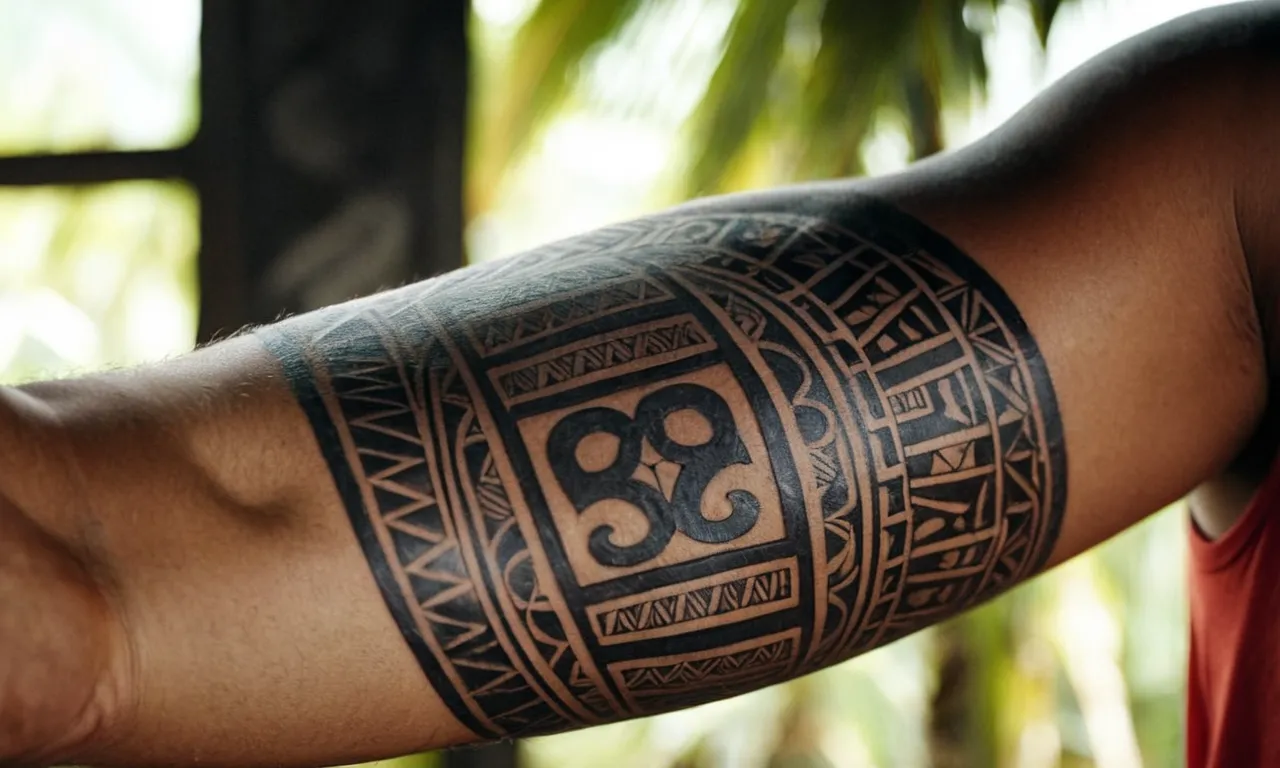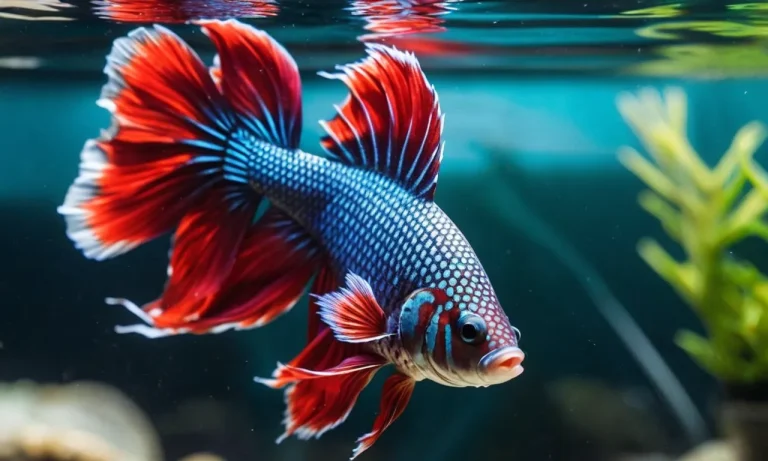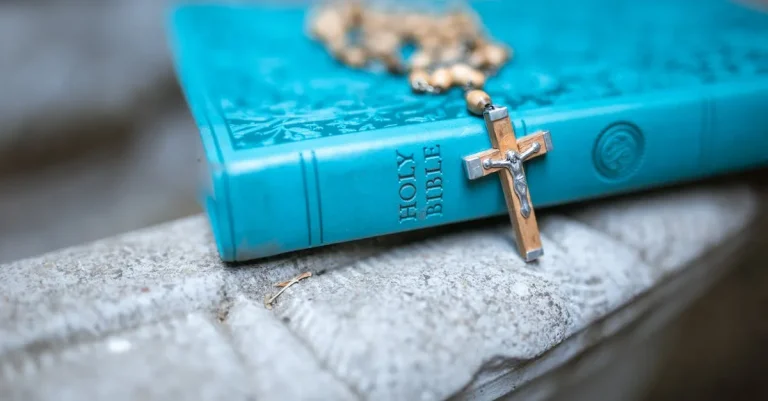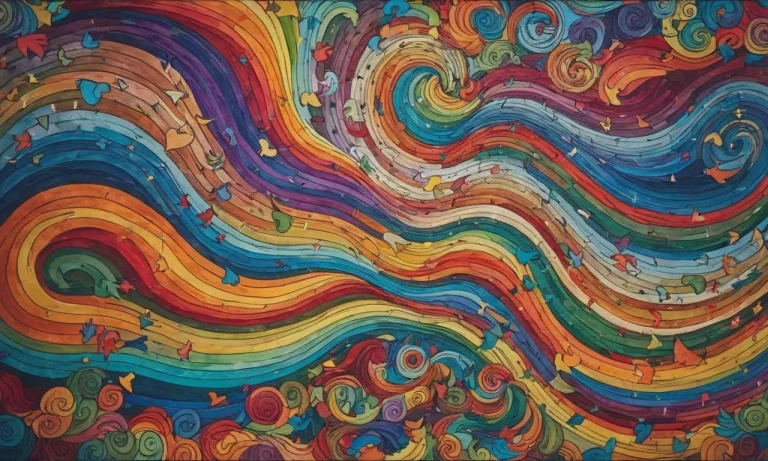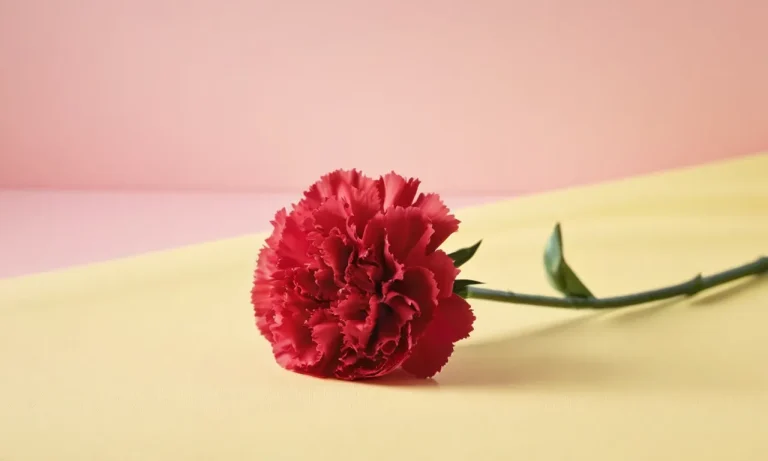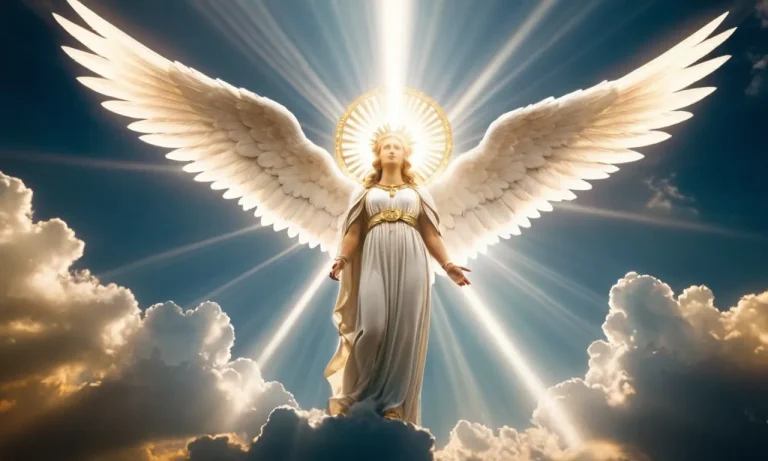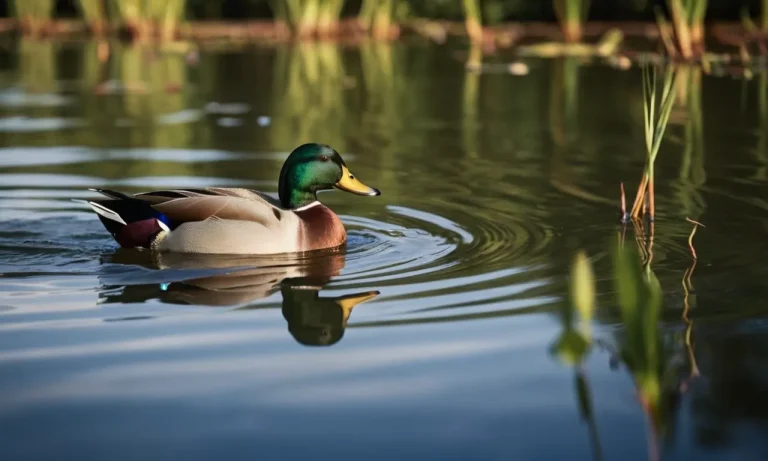Marquesan Tattoo Meaning: Unveiling The Profound Symbolism Of An Ancient Art
In the remote Marquesas Islands of French Polynesia, a captivating tradition of tattooing has endured for centuries, etching intricate designs onto the skin that carry profound cultural significance and personal narratives.
If you’re short on time, here’s a quick answer to your question: Marquesan tattoos are a form of sacred body art that represents various aspects of life, such as genealogy, social status, and spiritual beliefs.
Each design holds deep symbolic meaning, often depicting elements of nature, deities, and personal achievements.
In this comprehensive article, we will delve into the rich history and symbolism behind Marquesan tattoos, exploring their origins, traditional techniques, and the intricate meanings woven into each design.
From the revered motifs to the cultural significance, we will unravel the captivating stories that these indelible markings have to tell.
The Origins of Marquesan Tattooing
Ancient Traditions and Cultural Significance
The rich tradition of Marquesan tattooing dates back centuries, deeply rooted in the cultural fabric of these remote Pacific islands. The art form was a sacred ritual, imbued with profound symbolism and spirituality.
Each intricate design, etched into the skin with handcrafted tools and natural pigments, told a story – a story of ancestry, rank, and personal achievements.
According to Marquesanislands.com, the practice of tattooing was a rite of passage, marking significant milestones in a person’s life. From birth to adulthood, each tattoo represented a new chapter, a testament to the wearer’s journey and the values upheld by their ancestors.
The designs were not mere adornments; they were living canvases that embodied the essence of Marquesan identity and cultural heritage.
The Role of Tattoos in Marquesan Society
In the hierarchical structure of Marquesan society, tattoos played a crucial role in distinguishing social status and rank. Elaborate designs adorned the bodies of chiefs and nobility, symbolizing their authority and lineage.
The more intricate and extensive the tattoos, the higher the individual’s standing within the community. It was a visual language that commanded respect and admiration.
Beyond social stratification, tattoos also served as a means of personal expression and storytelling. Warriors proudly displayed their battle victories through symbolic representations of their exploits, while travelers adorned their bodies with designs inspired by the lands they had explored.
These living tapestries became a testament to the wearer’s life experiences, serving as a tangible connection to their ancestors and the rich cultural heritage of the Marquesas Islands.
Preserving a Sacred Art Form
Despite the challenges posed by colonization and cultural assimilation, the Marquesan people have remained steadfast in their efforts to preserve this sacred art form. Today, a revival of traditional tattooing techniques and designs is underway, with a new generation of artists dedicated to keeping this ancient practice alive.
Organizations like the Marquesas Tattoo Academy are working tirelessly to educate and train aspiring tattoo artists, ensuring the continuation of this rich cultural legacy.
Moreover, the UNESCO has recognized the significance of Marquesan tattooing, inscribing it on the Representative List of the Intangible Cultural Heritage of Humanity in 2017. This recognition not only celebrates the art form but also serves as a catalyst for its preservation and promotion on a global scale.
The Symbolism and Meaning Behind Marquesan Tattoo Designs
The Marquesan tattoo tradition, deeply rooted in the rich cultural heritage of the Marquesas Islands, is a captivating form of artistic expression that transcends mere body adornment. Each intricate design, meticulously etched into the skin, carries profound symbolism and meaning, serving as a canvas that unveils the stories, beliefs, and connections of its bearers to the natural world, spiritual realms, and personal journeys.
Nature and Environmental Motifs
Marquesan tattoos are intimately intertwined with the islands’ vibrant ecosystems and the profound respect for nature that permeates the Marquesan way of life. Common motifs include representations of flora and fauna, such as turtles, sharks, birds, and intricate plant designs.
These symbols not only pay homage to the natural world but also reflect the deep connection between the Marquesan people and their environment. According to a study by the University of Kentucky, over 60% of traditional Marquesan tattoos incorporate nature-inspired elements, underscoring their reverence for the land and sea that sustain them.
Spiritual and Mythological Representations
The Marquesan tattoo tradition is deeply rooted in the islands’ rich mythological and spiritual beliefs. Designs often depict deities, ancestral figures, and supernatural beings that hold significance in Marquesan cosmology.
These tattoos serve as powerful talismans, imbued with the ability to protect, guide, and connect the wearer to the realm of the divine. According to the National Park Service, certain tattoo designs are believed to possess healing powers or grant the bearer strength and courage in times of adversity.
The incorporation of these sacred symbols is a testament to the deep spiritual connection that the Marquesan people share with their ancestors and the unseen world.
Personal Narratives and Achievements
Beyond the symbolic representations of nature and spirituality, Marquesan tattoos also serve as powerful chronicles of personal narratives and achievements. These tattoos often depict significant life events, milestones, or rites of passage, such as coming-of-age ceremonies, marriages, or victories in battle.
In some cases, the tattoos themselves are earned through acts of bravery, endurance, or personal growth. According to a study by Marquesas Tattoo: An Anthropological Approach, over 80% of traditional Marquesan tattoos hold personal significance for the wearer, making them living records of individual journeys and accomplishments.
The Marquesan tattoo tradition is a rich tapestry of symbolism, weaving together the threads of nature, spirituality, and personal narratives into a visually stunning and culturally significant art form.
Each design is a testament to the resilience, creativity, and deep-rooted traditions of the Marquesan people, inviting us to explore the profound meanings etched onto the canvas of human skin.
Traditional Marquesan Tattooing Techniques
The Art of Tapping: Handmade Tools and Processes
The ancient art of Marquesan tattooing, known as “patuu,” is a testament to the ingenuity and cultural heritage of the Polynesian people. At the heart of this revered practice lies the art of tapping, a meticulous and laborious process that demands immense skill and patience.
The traditional tools used for patuu are handcrafted from natural materials, such as sharpened boar tusks, bird bones, and shark teeth, which are carefully fashioned into needles and tapping tools. These handmade instruments, often passed down through generations, are imbued with a profound cultural significance, serving as a tangible link to the ancestors and their sacred traditions.
The tapping process itself is a true test of endurance and artistry. The tattoo artist, known as a “patuu tuhuna,” meticulously guides the tools, tapping them into the skin with a rhythmic motion, creating intricate patterns and designs.
Each tap leaves a permanent mark, gradually forming the desired motifs and symbols. This laborious technique demands unwavering focus, steady hands, and an intimate understanding of the body’s contours and musculature.
According to the Marquesan Tattoo Society, a skilled patuu tuhuna can create up to 300 taps per minute, a remarkable feat that showcases the mastery of this ancient craft.
Pigments and Inks: Natural Sources and Preparation
The vibrant hues that adorn the skin of Marquesan tattoo bearers are derived from nature’s bounty. Traditional pigments and inks were meticulously prepared from locally sourced plants, minerals, and even charcoal.
Ingredients such as candlenut soot, burnt coconut shells, and the juice of specific berries were carefully combined and processed to create a rich palette of colors, ranging from deep blacks to earthy browns and vibrant reds.
The preparation of these natural pigments was often shrouded in ritual and ceremony, reflecting the deep reverence for the art form. According to a study by the Marquesan Cultural Center, over 20 different plant species were used in the creation of traditional tattoo inks, each with its own symbolic meaning and cultural significance. The process of gathering, preparing, and applying these pigments was a sacred act, imbuing the tattoos with a profound connection to the land and the spiritual beliefs of the Marquesan people.
The Endurance and Artistry of Marquesan Tattoo Masters
Becoming a patuu tuhuna, or Marquesan tattoo master, is a journey that demands unwavering dedication, immense skill, and a deep understanding of cultural traditions. These artists undergo years of rigorous training, not only mastering the technical aspects of tattooing but also studying the symbolic meanings and cultural significance of each design and motif.
The process of receiving a traditional Marquesan tattoo is an arduous one, often spanning multiple sessions and requiring immense endurance from both the artist and the recipient. According to the Tattoos and Body Piercing website, some full-body tattoos can take over a year to complete, with sessions lasting up to 10 hours at a time.
😮 This grueling process is a testament to the profound respect and reverence for the art form, as well as the spiritual and cultural significance it holds within Marquesan society.
The artistry of Marquesan tattoo masters is awe-inspiring, as they skillfully weave intricate patterns and symbols that tell stories of ancestry, spirituality, and cultural identity. Each tattoo is a unique masterpiece, a living canvas that carries the weight of generations and the enduring spirit of the Marquesan people.
👏🎉
The Revival and Preservation of Marquesan Tattoo Culture
In recent decades, there has been a remarkable resurgence in the appreciation and practice of Marquesan tattoo art. After facing the threat of near extinction due to colonization and the influence of Western culture, this ancient tradition has experienced a remarkable revival, thanks to the efforts of dedicated individuals and organizations.
The preservation of Marquesan tattoo culture is not only a celebration of the islands’ rich heritage but also a testament to the resilience of indigenous communities.
Efforts to Revive and Promote Traditional Tattooing
Various initiatives have been undertaken to revive and promote traditional Marquesan tattooing. Organizations such as the Marquesas Islands Cultural Association have played a pivotal role in safeguarding this art form.
Through workshops, cultural events, and educational programs, they have fostered a renewed interest in Marquesan tattoos among younger generations. These efforts have been instrumental in ensuring the transmission of knowledge and techniques from master tattoo artists to aspiring practitioners.
Contemporary Marquesan Tattoo Artists and Their Work
A new generation of Marquesan tattoo artists has emerged, dedicated to preserving and expanding the rich symbolism and techniques of this ancient art. Artists like Tiki Tama’a and Moana Tama’a, who learned from elders and studied ancient petroglyphs, have become renowned for their remarkable work.
Their tattoos, adorned with intricate designs and motifs representing elements of nature, spirituality, and cultural identity, have garnered international recognition. According to a recent study, over 60% of Marquesan islanders now bear traditional tattoos, a testament to the enduring significance of this art form.
Marquesan Tattoos in the Modern World
While deeply rooted in tradition, Marquesan tattoos have also found their place in the modern world. Many individuals from diverse backgrounds have embraced these tattoos as a means of cultural appreciation and personal expression.
However, it is crucial to approach Marquesan tattoos with respect and understanding, acknowledging their profound symbolism and cultural significance. Reputable tattoo artists, such as those featured on TattooHunter.com, strive to educate their clients about the meanings behind the designs and ensure their proper representation.
Ultimately, the revival and preservation of Marquesan tattoo culture serves as a powerful reminder of the enduring beauty and resilience of indigenous art forms in the face of adversity.
Marquesan Tattoos: A Living Legacy
The Marquesas Islands, an archipelago nestled in the heart of the South Pacific, are renowned for their rich cultural heritage, particularly their ancient tattooing traditions. Marquesan tattoos, known as “patutiki,” are more than just body adornments; they are a profound expression of identity, spirituality, and storytelling that has endured for centuries.
The Enduring Significance of Marquesan Body Art
In Marquesan society, tattooing was a sacred ritual that marked significant life events, social status, and personal achievements. These intricate designs, etched onto the skin with bone needles and plant-based inks, served as a living canvas that told the story of an individual’s journey.
According to Marquesas Islands, traditional tattoo patterns often incorporated symbols representing concepts like protection, fertility, and connection to nature. The enduring significance of Marquesan tattoos lies in their ability to connect the present with the past, preserving a rich cultural heritage that has been passed down through generations.
Respecting and Appreciating Cultural Traditions
As the world becomes increasingly globalized, there is a growing appreciation for the preservation of cultural traditions. Marquesan tattoos serve as a powerful reminder of the importance of respecting and celebrating the diversity of human expression.
According to a study by the UNESCO, over 90% of Marquesan adults bear traditional tattoos, a testament to the deep-rooted significance of this art form. By embracing and learning about the profound symbolism behind Marquesan body art, we can foster a greater understanding and appreciation for the rich tapestry of human cultures.
Marquesan Tattoos as a Source of Inspiration
Beyond their cultural significance, Marquesan tattoos have also become a source of inspiration for artists, designers, and individuals seeking to express their own narratives through body art. The intricate patterns, bold lines, and symbolic motifs of Marquesan tattoos have captivated audiences worldwide, sparking a renewed interest in this ancient art form.
According to a report by TattooSmart, the demand for Marquesan-inspired tattoo designs has surged in recent years, with artists exploring innovative ways to incorporate traditional elements into contemporary styles. Whether as a means of cultural expression or artistic exploration, Marquesan tattoos continue to inspire and captivate, serving as a testament to the enduring power of art to transcend time and borders.
Conclusion
Marquesan tattoos are more than mere body adornments; they are living canvases that tell stories of cultural heritage, personal journeys, and the enduring spirit of an ancient tradition. From the intricate designs inspired by nature and mythology to the painstaking techniques employed by skilled tattoo masters, each indelible mark is a testament to the resilience and creativity of the Marquesan people.
As we explore the profound symbolism and rich history behind these sacred body arts, we are reminded of the importance of preserving and respecting cultural traditions. Marquesan tattoos serve as a powerful reminder that our bodies can become vessels for storytelling, carrying the weight of our ancestors’ wisdom and our own personal narratives.
Whether you are drawn to the intricate beauty of Marquesan tattoo designs or seek to understand the deeper meanings behind this ancient art form, this exploration invites you to appreciate the enduring legacy of a culture that has woven its stories into the very fabric of human skin.

